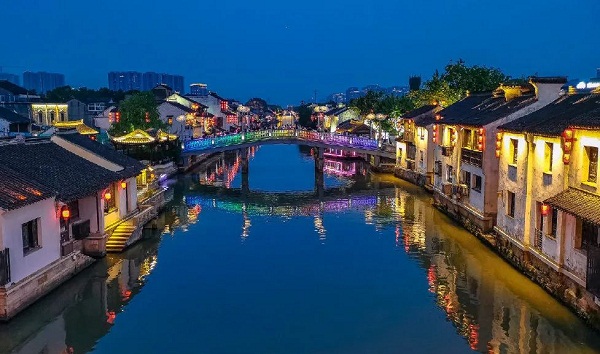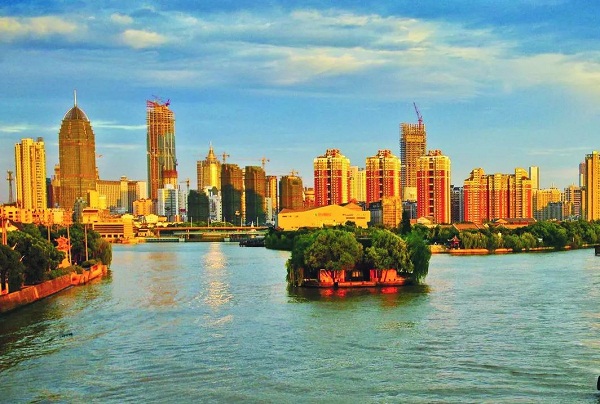
The 1.6-km-long section of the Grand Canal in the Qingming Bridge Historical Culture Block is popular among visitors. [Photo/WeChat account: wuxifabu2013]
The Grand Canal, which stretches from Beijing to Hangzhou, is the most important river in Wuxi.
Built 1,400 years ago, the Grand Canal is a major water transportation route that passes directly through Wuxi. The Wuxi section of the canal is 40.6 kilometers long and connects with the 3,000-year-old Bodu River under the Qingming Bridge.
More than 100 small canals have been developed around the main canal over the past 1,000 years, as the city gradually grew from an agricultural production base in ancient China to a modern industrial center.
The old Wuxi was famed as the "Venice of the East" for its concentrated river network in the area encircled by its moat.
Over the course of many years, the 1.6-km-long section of the canal in the Qingming Bridge Historical Culture Block gradually became one of the city's most popular tourist destinations due to its unique cultural and architectural heritage.
UNESCO recognized the 2,700-km Grand Canal, which was initially built so that the emperors of the Sui Dynasty (581-618) could travel to southern China faster, as a new World Heritage in June 2014. The news caused the 18 cities along the canal to begin competing for the claim the UNESCO title due to the influx of tourists expected to accompany it.

Huangbu Pier. [Photo/WeChat account: wuxifabu2013]
A small island known as Huangbu Pier, which consists of a small hill covered in thick foliage, sits upstream of the canal where it enters Wuxi. The island once served as a port where officials coming from North China via the canal would stay.
Another island, Xishui Pier, is located at the point where the Liangxi River meets the Grand Canal. A grand temple fair is held there every year on the sixth day of the sixth month of the lunar calendar.
Thanks to the Grand Canal, Wuxi became famous around the country for its wholesale grain. It also became a birthplace of China's modern industry and commerce by taking advantage of its developed water transportation system. It remains one of the busiest canal cities in China today.